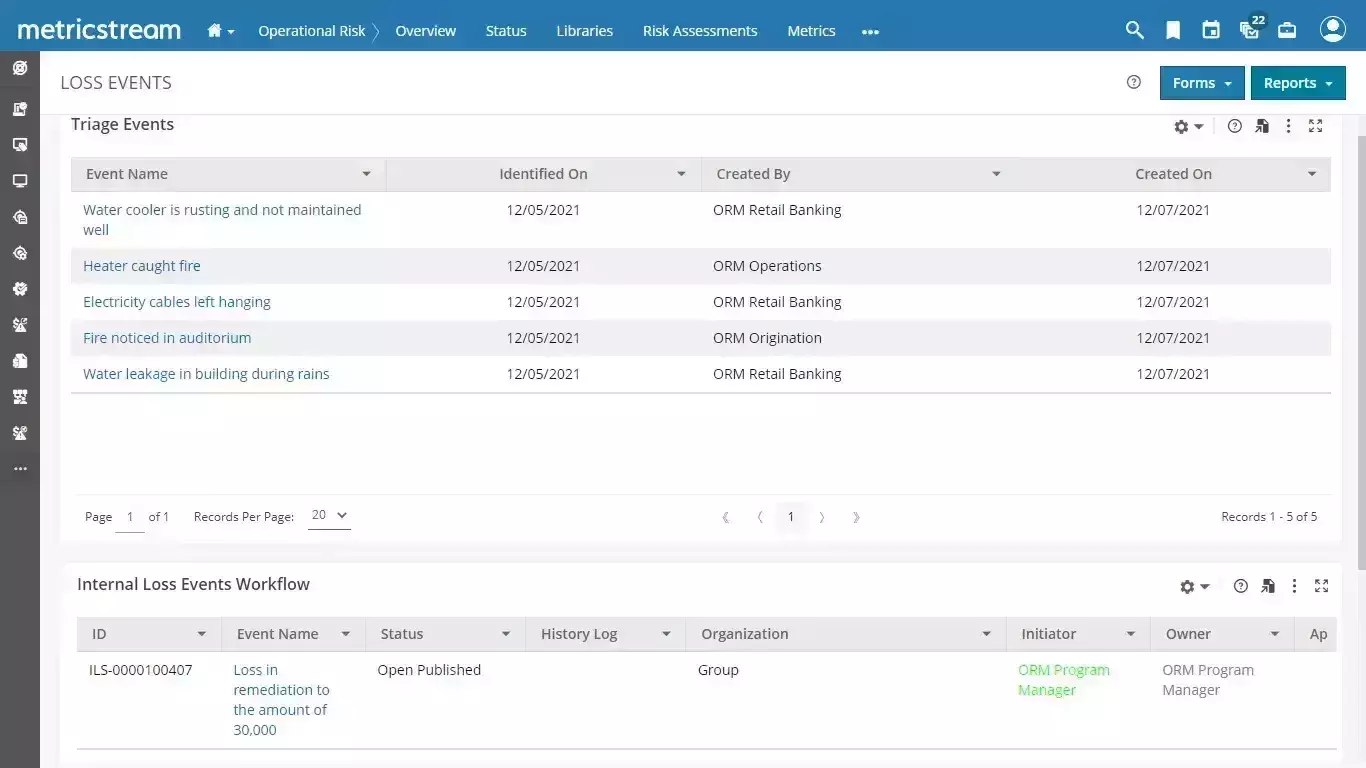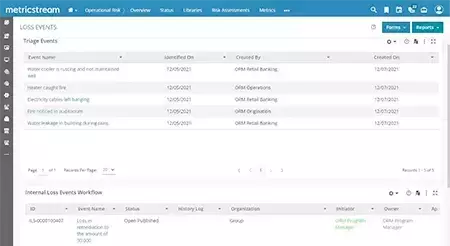

Gain Comprehensive Visibility into Operational Loss Data
MetricStream Operational Loss Data Management, built on the proven MetricStream Platform, enables organizations to streamline the management of operational losses end-to-end. It simplifies capturing and categorizing risk events and losses across multiple impacted organizations. It helps record event details such as description, region, functions impacted, regulatory classification, factors, and potential/actual loss or near misses. The Platform’s centralized repository allows linking of losses to organizations, risks, processes, controls, and other loss events to facilitate analysis and reporting. Its meticulous workflow and collaboration engine helps aggregate loss data, analyze loss trends, conduct a causal analysis, and initiate corrective actions across the organization.
How Our Operational Loss Data Management Helps You


Centralized Loss Data Repository
Establish a central system to capture loss data, including internal losses, external losses, and near misses, at various organizational levels and roll it up to the corporate level to generate the overall loss profile. Categorize loss type based on pre-defined criteria and severity level. Correlate the current loss data with the past data for quick analysis and remedial actions. Consolidate data from various loss events and link it to risks, processes, controls, etc. for deeper loss analysis and reporting.
Efficient Capturing of Loss Events
Enable a risk-aware organization with an intuitive, simple, and centralized system across the organization to log a loss or risk event such as fraud or other unethical activities anonymously and minimize losses by acting on it early and efficiently. Facilitate a consistent process to investigate the loss event and take corrective and preventive action with predefined workflows.
Loss Simulation and Analysis
Leverage built-in statistical and trend-analysis capabilities, combined with reporting capabilities, for analyzing trends and representing operational risks in monetary terms. Plot trends related to loss events, recurring problems, and root causes, all leading to effective case investigation and resolution. Simulation techniques help transform range-based estimates into more accurate values enabling risks teams to take better risk-informed decisions.
Streamlined Review of Loss Events
Automatically trigger and route loss events for review and analysis to authorized users based on predefined rules for review, approval, and disposition. Enable well-defined processes for loss evaluation, investigation, tracking, and complete root-cause analysis to drive appropriate remedial actions.
Systematic Issue and Remedial Actions
Receive automated alerts and notifications triggered based on predefined review and approval workflows for initiating issues and remedial actions to contain the impact of the issue and conduct failure investigation to identify the root cause.
Comprehensive Reporting and Metrics Driven by Internal and External Data
Enhance enterprise-wide visibility into the operational loss data and quickly identify high-priority losses, near misses, and related information with executive dashboards and flexible reports with drill-down capabilities. Map trends quarter to quarter and year to year with analytics to spot trends and recurring problems and resolve them swiftly.
How Our Operational Loss Data Management Benefits Your Business
- Enhance visibility into loss events and resultant remediation process
- Drive effective decision-making with a simple yet comprehensive loss data approach that ensures loss data integrity and improves analysis and reporting
- Streamline loss capture, review, and mitigation with automated workflows and status reporting
- Save time and effort spent in routine administrative tasks like gathering loss information across multiple business lines, documenting exceptions, calculating gross loss information, etc.
- Establish good governance by facilitating anonymous reporting of loss or risk events
























